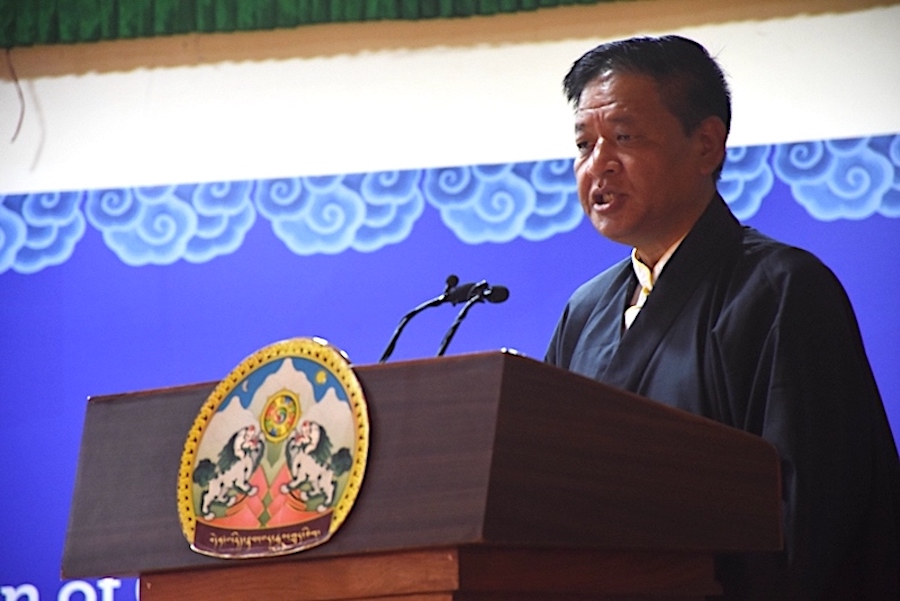By Kate Saunders
The authorities in the Tibet Autonomous Region have stepped up the implementation of family planning policy with the despatch of 64 specially equipped vehicles to be used in different counties as mobile clinics. While the clinics will be welcomed in some areas for the provision of contraception, there are also fears among some health workers that they may lead to an increase in pressure on Tibetan women to undergo birth control measures. A report by Xinhua on 3 May stated: ‘The mobile clinics will be used for check-ups on local women, distributing contraceptives, transporting patients and publicising the local family planning policy.’
Women living in remote rural areas of Tibet generally do not have access to cheap and safe contraception, and in recent years, many rural women have reported that mobile family planning teams and health workers do not reach their areas. The provision of these new mobile clinics is likely to increase the outreach of birth control measures into the rural areas and implementation of family planning policy, which varies greatly from county to county. The Xinhua report does not give details of the counties and prefectures where the mobile clinics will be despatched, and it does not indicate that the clinics will provide any health education. The emphasis of family planning policy in Tibet and China tends to be on prevention of conception and control of fertility as opposed to the provision of education on the health and well-being of women and thorough health screening.
A Western health professional who has worked in various clinics in the TAR said: ‘Of course some of these rural women welcome the opportunity to use contraception because they do not want to have more than one or two children. But we have heard many reports of women who already have two or three children being put under strong pressure to attend these clinics and to use some form of contraception or undertake sterilisation if that is available.’
The new mobile teams are likely to provide the Norplant hormonal implant and the IUD to Tibetan women. It is not clear whether they will also offer sterilisation (tubal litigation) or whether the vehicles would simply transport women to the nearest hospital where this procedure can be carried out. Most county hospitals in the TAR are unable to perform sterilisation due to a lack of qualified staff who are able to perform surgery and administer anaesthetics, so women often have to travel long distances to the prefectural hospital.
The Western health professional said that the information that the mobile clinics are visiting an area passes from the county hospital reproductive health care personnel and Women’s Federation representatives down to the township level health and Women’s Federation personnel. It is the job of the Women’s Federation representative at village level to identify married women who already have the quota of children allowed and are not taking contraception, and to refer these women to the services of the clinic.
The level of expertise of health workers in charge of the mobile clinics varies greatly. Often they do not have the expertise or experience to discuss side-effects of contraceptives with women, or to screen women and choose which form of contraceptive is the most appropriate. Methods of contraception are generally always targeted at women, and there is usually only one type of contraception available even though this may not be the most suitable type for the individual in question.
Tibetan women living in rural areas do not have access to adequate health care; the township health post may be many days travel away and inaccessible during the winter and rainy seasons. Even when it is accessible, the health worker is often young and inexperienced, having undergone what is only a one or two month training period. Women in Tibet are at particular risk during pregnancy and childbirth – Tibet’s very high maternal mortality rate is at least partially a result of the lack of access to health services of women living in rural areas.
This is one in a series of independent reports by Kate Saunders commissioned by the Australia Tibet Council, Free Tibet Campaign and the International Campaign for Tibet.
Corrections – (3rd August, 2003)
Sterilisation should have been defined as ‘tubal ligation’ and not ‘tubal litigation’ as it appeared in the text.
The report also referred to health workers who had ‘undergone what is only a one or two month training period’. ‘Temporary’ health workers, who form the majority of health workers at township level and all those at village level, may in fact only have had a few weeks training or none at all – while others may have had months or up to a year of training. Temporary health workers generally earn very little and have no job security or pension, compared to ‘permanent’ health workers – government employees who receive a salary, health insurance, pension and job security – who have usually graduated from two or three years training at a prefectural level school of health care.









